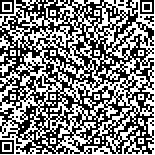| 引用本文: | 张梓健,李统,邓书端,万辉,董春雷.昆明地区室内自然环境对不同类型木质梁蠕变性能的影响[J].建筑材料学报,2023,26(7):800-808 |
| |
|
| |
|
|
| 本文已被:浏览 114次 下载 287次 |

码上扫一扫! |
|
|
| 昆明地区室内自然环境对不同类型木质梁蠕变性能的影响 |
|
张梓健,李统,邓书端,万辉,董春雷
|
|
西南林业大学 云南省木材胶黏剂及胶合制品重点实验室,云南 昆明 650224
|
|
| 摘要: |
| 采用自研足尺寸木质梁蠕变测试系统,对昆明室内自然环境下2种实木矩形梁和3种木工字梁进行了200 d蠕变测试,并分析其含水率与相对湿度的关系.结果表明:木质梁含水率的变化明显滞后于相对湿度的变化,且其在吸湿段的滞后大于解吸段;2种实木矩形梁和3种木工字梁在低湿波动、高湿波动、湿度持续波动上升和湿度持续波动下降这4类相对湿度典型变化时段的平均蠕变速率分别为8.839×10-2、1.183×10-2、-1.730×10-2/-3.598×10-2、7.424×10-2/9.007×10-2 mm/d,机械吸附蠕变特征明显;7条木质梁的FB90(加载90 d后蠕变挠度与加载1 min后蠕变挠度的比值)小于1.60,满足承重用梁的抗蠕变要求;实木矩形梁的抗蠕变性能优于木工字梁. |
| 关键词: 蠕变 自然气候 实木矩形梁 木工字梁 定量计算 |
| DOI:10.3969/j.issn.1007-9629.2023.07.013 |
| 分类号:TU366.3;TU317.1 |
| 基金项目:国家自然科学基金资助项目(31960291);高等学校学科创新引智计划(D21027) |
|
| Effect of Indoor Natural Environment on Creep of Different Wood Beams in Kunming Area |
|
ZHANG Zijian, LI Tong, DENG Shuduan, WAN Hui, DONG Chunlei
|
|
Yunnan Provincial Key Laboratory of Wood Adhesives and Glulam Products, Southwest Forestry University, Kunming 650224, China
|
| Abstract: |
| The creep test of two types of wood rectangular beams and three types of wood I-beams under indoor natural environment in Kunming were conducted for 200 d using a self-developed full-size wood beam creep test system. The relationship between moisture content and relative humidity was analyzed. The results show that the changes in moisture content of the wood beams significantly lag behind the changes in relative humidity and the lag in the absorption is greater than that in the desorption. The average creep rates of two types of wood rectangular beams and three types of wood I-beams in four typical relative humidity change periods of low humidity fluctuation, high humidity fluctuation, rising humidity continuous fluctuation and declining humidity continuous fluctuation are 8.839×10-2,1.183×10-2,-1.730×10-2/-3.598×10-2 and 7.424×10-2/9.007×10-2 mm/d respectively. The mechanical absorption creep characteristics are obvious. The FB90 (ratio of creep deflection at 90 d to creep deflection at 1 min) of seven beams is less than 1.60, which meets the creep resistance requirement of beams for load-bearing. The creep resistance of wood rectangular beams is better than that of wood I-beams. |
| Key words: creep natural climate wood rectangular beam wood I-beam quantitative calculation |
|